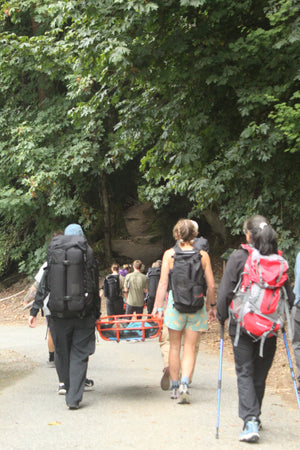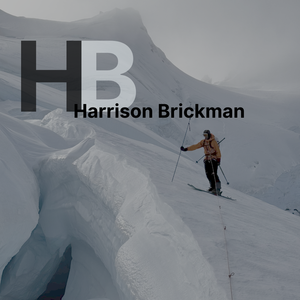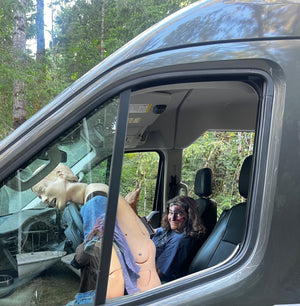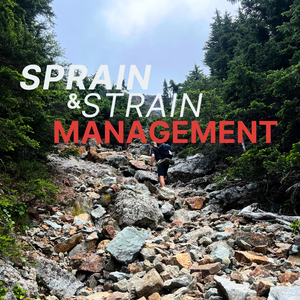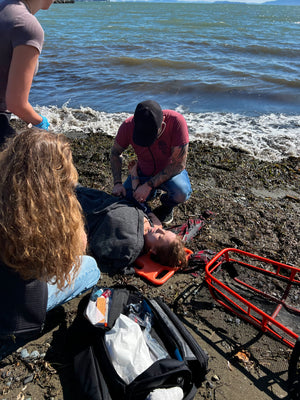Heather Meadows - Student Guide & Logistics
This guide contains essential information to help you prepare for your upcoming practical session at Heather Meadows. Please review it carefully to ensure a smooth, safe, and successful training experience.
Location & Arrival
Your practical session will be held in the stunning subalpine landscape of Heather Meadows, an ideal environment for immersive, hands-on winter and alpine medical training. The challenging terrain and conditions provide a world-class, real-world classroom.
Facility Address: Glacier Fire Protection District 19, 9953 Mt Baker Hwy, Deming, WA 98244
Driving Directions:
From Seattle (Approx. 2.5 - 3 hours): Take I-5 North to Bellingham (Exit 255). Follow WA-542 East (Mount Baker Highway) for approximately 56 miles to the end of the plowed road at the Heather Meadows ski area.
From Bellingham (Approx. 1.5 hours): Take WA-542 East (Mount Baker Highway) for approximately 56 miles to the end of the plowed road at the Heather Meadows ski area.
CRITICAL - Transportation & Road Conditions: Students are responsible for their own transportation. A personal vehicle with all-wheel drive (AWD) or 4-wheel drive (4WD) and good winter/snow tires is highly recommended. The Mount Baker Highway can have chain requirements or experience temporary closures due to heavy snowfall. Always check the road conditions before you travel.
WSDOT Road Report for SR 542: WSDOT Mt. Baker Highway Travel Alert
We encourage coordinating with classmates via the Student Portal to arrange carpools.
Preparing for Your Practical Session
Weather & Environment Heather Meadows is a high-elevation alpine environment. During the winter, you must be prepared for severe mountain weather, including heavy snow, high winds, freezing rain, and extremely cold temperatures (often well below freezing). Conditions can change with little to no warning. Proper preparation is not just for comfort—it is a matter of safety.
Check the Local Forecast: Mt. Baker Ski Area Weather Forecast
Facilities & Logistics This is a field-based course operating out of the Heather Meadows area. Unlike our residential programs, this course is not all-inclusive.
Lodging: NOT INCLUDED. Students are responsible for arranging their own lodging. Options are available in the nearby towns of Glacier and Maple Falls. Book well in advance, as availability can be limited.
Meals: NOT INCLUDED. You must bring your own food, snacks, and a thermos with hot drinks for each day of the course. There is the Heather Meadows Cafe where you can enjoy a hot meal and warm drinks during your break.
Connectivity: There is no reliable cell service at Heather Meadows. Instructors will have emergency communication devices. Plan to be offline during training hours. The nearest reliable cell service is in the town of Glacier.
Recreation: The area is a hub for winter recreation. If you plan to ski, snowboard, or snowshoe outside of course hours, you must bring your own personal equipment.
Required Packing & Gear List
Proper gear is critical for your safety, comfort, and success in this winter alpine environment. Your gear will be used in realistic scenarios and will be exposed to snow, moisture, and cold.
Essential Course Items
Watch with a Second Hand: Mandatory for taking patient vitals. A simple, durable watch is sufficient.
Government-Issued Photo ID.
Note-Taking Materials: A waterproof notebook (e.g., "Rite in the Rain") and several pens/pencils are highly recommended.
Backpack (30-40L): Must be large enough to carry all your extra layers, water, food, and personal items for a full day in the snow.
Headlamp: With extra batteries. Essential for low-light scenarios and short winter days.
Clothing System: Winter & Alpine You will be outside for extended periods in potentially harsh conditions. Layering is essential. Avoid cotton, as it loses insulation when wet.
Outerwear (Your Shell)
-
- Waterproof/Windproof Jacket: A high-quality, durable shell jacket (e.g., Gore-Tex) is non-negotiable.
- Waterproof/Windproof Pants: Shell pants, preferably with side zips to go on over boots, are mandatory.
Insulation Layers (Warmth)
-
- Heavy Insulating "Puffy" Jacket: A thick down or synthetic insulated jacket is essential for staying warm during stationary periods.
- Mid-Layer Fleece or Wool Jacket: One or two fleece or wool layers for active insulation.
- Insulated Pants (Optional but Recommended): Lightly insulated pants or fleece pants to wear under your shell pants on very cold days.
Base Layers (Next to Skin)
-
- Mid-weight Thermal Underwear (2 sets): Both top and bottom layers made of merino wool or synthetic material. Having a dry spare set is a great idea.
Footwear
-
- Insulated, Waterproof Winter Boots: Mandatory. Standard hiking boots are not sufficient. Boots must be warm, waterproof, and broken-in.
- Gaiters: To keep snow out of your boots.
- Wool or Synthetic Socks (4-5 pairs): Bring more pairs than you think you need. Dry socks are crucial for warm feet.
Extremities (Head, Hands, Face)
-
- Warm Winter Hat (Beanie): Must cover your ears.
- Balaclava or Neck Gaiter (Buff): For face protection from wind and cold.
- Gloves/Mittens (2-3 pairs): One pair of lighter gloves for dexterity. One pair of very warm, waterproof mittens or ski gloves. A spare pair is highly recommended.
- Goggles: Essential for eye protection from wind, snow, and sun.
- Sunglasses & Sunscreen: Sun reflecting off snow is intense, even on cloudy days.
Personal & Optional Items
Water Bottles (1-2L total): Insulated bottles are recommended to prevent freezing.
Thermos: For a hot drink like tea or soup. Highly recommended for morale and warmth.
Personal Medications & Toiletries.
Personal First-Aid Kit: For minor needs like blisters or headaches.
Snowshoes or Microspikes: May be required depending on conditions. Check with the course administrator closer to the start date.
Portable Power Bank: To keep your phone/devices charged.
High-Energy Snacks: Bring more than you expect to eat. Your body burns extra calories to stay warm.
